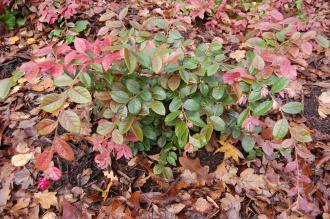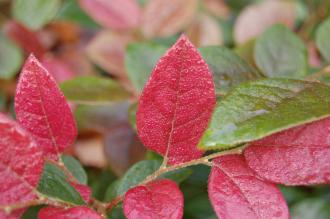
Loropetalum chinense f. rubrum (30/11/14, Kew Gardens, London)
Position: Full sun to partial shade
Flowering period: Late winter to early spring
Soil: Moist, well drained
Eventual Height: 2m
Eventual Spread: 2m
Hardiness: 7b, 8a, 8b, 9a, 9b
Family: Hamamelidaceae
Loropetalum chinense f. rubrum is an evergreen shrub with a vase shape to rounded habit. Its leathery green/ purple leaves are ovate with entire margins, up to 6cm long and 3cm broad. Its new leaves appear red/ purple. Its fragrant pink flowers have long petals similar to Hamamelis.
Loropetalum chinense f. rubrum, commonly known as Chinese Fringe Flower or Loropetalum, is native to south China, Japan and Burma. In its native habitat it grows as a woodland shrub.
The etymological root of the binomial name Loropetalum is derived from the Greek loron meaning ‘strap shaped’ and petalon meaning ‘leaf’. Chinense is derived from the Latin chinensis meaning ‘ from China’.
Rubrum is derived from the Latin rubra meaning ‘red’.
The landscape architect may find Loropetalum chinense f. rubrum useful as part of an ornamental woodland planting scheme.
Ecologically, Loropetalum chinense f. rubrum flowers are attractive to pollinating insects.

Loropetalum chinense f. rubrum Leaf (30/11/14, Kew Gardens, London)
Loropetalum chinense f. rubrum prefers moist, humus rich, well-drained soils. It tolerates most pH of soil, although it prefers a slightly acidic soil.
Loropetalum chinense f. rubrum requires little maintenance. If necessary this shrub should be pruned after flowering.

